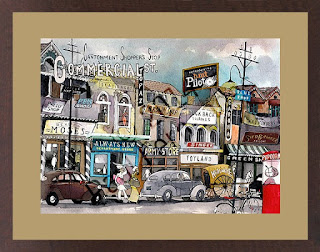Long
after the last mourner’s wail is heard from burial grounds and crematoria
around the world, caused by the death and destruction from the Corona virus,
which originated in Wuhan, the China problem will live on. Globalization will be challenged and the world
will push back against Beijing.
Ironically,
China could hide the disease for three weeks and “export” it under the same
devils bargain that ensured globalization. China can move millions off their
farms making its own citizens landless overnight for foreign factories and make
people work long hours for two generation for a pittance and no health care.
These measures, not allowed in the West were but overlooked for prosperity. This
world of wink, wink, nudge, nudge is heading for a shove.
That
is the post modern truth of today’s world.
Chinese
totalitarian that underpinned global consumerism for so long – is now seen as a
mortal threat to the very core of the free world’s way of life.
The
three weeks when china could have warned the rest of the world but chose not to
could well turn out to be the longest three weeks for globalization ever since
Deng Xiaoping opened China up in 1985.
Globalization
was underpinned by a simple brutal premise – the China price. China will decide
the critical mass and the quantity to be supplied at a price that you want. It
was an offer that could not be refused. No getting hand dirty on how it was
made in China. It cost nickels to the dime and for the price, worked just
perfect thank you.
Turns
out when you add the $4.2 trillion US Corona virus stimulus funds, $3 trillion
plus British fund $ 2.2 trillion in the EU and $1 trillion in Japan and
counting - that China price is actually a sleight of hand - if not outright
robbery.
But
decoupling China is not like changing a light bulb.
In
2018,
China’s trade in goods was $4.6
trillion or 12.4 percent of global
trade. At $300 billion, China’s yearly global trade surplus exceeds
the GDP of many countries. Chinese
consumers account for a staggering 46% of all e commerce transactions; Shenzhen
a sleepy village of the 80’s has a GDP greater than that of Russia.
From financing $4 billion for startups in India to $14 billion already
loaned to Pakistan for OBOR onto Africa where it is the largest goods trading partner
with $188 billion of trade in 2015, China looks omnipresent. The country is
also a leader in the internet economy with games like PubG owned partly by ten
cents to Tiktok of byte dance onto we chat and Taobao the latter is bigger than
Amazon. In new 5G and hyper sonic missiles and space weapons china is
leapfrogging.
Put another way, if the West wants to take China on it has to trade away
the grand trade off.
Capitalism does not put a premium on freedom, the global supply chain is
just in time and freedom just takes too much of it. Witness for example that
the initial trade deal with the US has withstood the Covid storm China is
buying $300 billion of agricultural produce in the swing states crucial for
president Trump.
The West will have to likely raise tariffs and cut taxes to ensure that
companies move away from China. That will raise prices in the OECD and may make
it impossible to manufacture without cutting minimum wages and raising inflation.
Generous pensions, could be history.
For China such a move by the West, will have massive consequences – it is
one thing for OECD to have some inflation quite another for the communist party
to have 10 million unemployed every year. More than 70 percent of Chinese
production is exported, you cut that - you cut the jugular, China will
hemorrhage.
Will the corona virus change things and raise the threat perception of
the West enough for it to take this great leap forward?
This is not an overnight job. It will take a cultural revolution from the
global consumer willing to take some pain and global governance to show some
gumption. It will entail moving manufacturing to other countries. Some, such as
Vietnam are totalitarian but cannot match China in scale while others like
India are democracies but without Chinese efficiency.
So how will the West respond?
It could choose to hit China were it hurts – fragment the supply chain
move to several countries at once and expose China’s greatest weakness – its infrastructure
serves the whole world but its domestic consumption while huge still remains
small when manufacturing investment to GDP is considered. While China is the world’s factory it is not
its own high street shop.
China has two important allies. Most of the commerce in China is not done
by states, its undertaken by giant multinational companies that out straddle
the nation state. These companies may not hate china with the same vigor as the
country of their origin. Secondly, so deeply intertwined is the Chinese supply
chain, that many in the west and India and other third world countries are
petty traders of Chinese products. These are in the millions and they do not
want change and will protest vocally. Lastly, it just may be too late, like big US
banks after the 2008 crises – China may simply have become too big to fail.





















